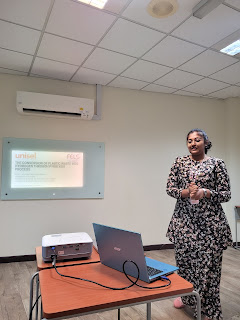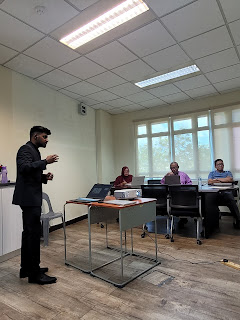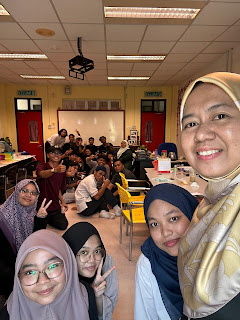Dalam bidang kejuruteraan dan
sains, teknologi membantu meningkatkan kecekapan, ketepatan dan keselamatan.
Contohnya, penggunaan perisian simulasi dalam kejuruteraan membolehkan jurutera
menguji reka bentuk sebelum dibina, sekali gus menjimatkan masa dan kos. Dalam
sektor kesihatan pula, teknologi perubatan moden membantu doktor membuat
diagnosis dengan lebih tepat dan pantas.
Namun begitu, penggunaan teknologi
tanpa kawalan boleh membawa kepada kesan negatif. Ramai yang sukar berenggang
dengan telefon pintar walaupun untuk seketika. Penggunaan media sosial seperti Instagram,
TikTok, X dan sebagainya semakin mempengaruhi cara berfikir, berkomunikasi dan
berinteraksi dalam kalangan rakyat Malaysia, khususnya generasi muda. Dalam
kalangan pelajar, penggunaan teknologi secara berlebihan tanpa kawalan boleh
mengurangkan kreativiti dan keupayaan menyelesaikan masalah secara kritikal.
Hakikatnya, teknologi seharusnya dilihat
sebagai alat sokongan untuk membantu manusia, bukannya menggantikan sepenuhnya
peranan manusia. Walaupun kecerdasan buatan (AI) semakin canggih dan mampu
melakukan pelbagai tugas, nilai kemanusiaan seperti empati, kreativiti dan
pertimbangan moral masih tidak dapat digantikan oleh mesin.
Dalam pendidikan dan kejuruteraan, penggunaan teknologi yang seimbang amat penting. Teknologi perlu menyokong proses pembelajaran dan penyelesaian masalah, sambil menggalakkan manusia terus berfikir, menganalisis dan membuat keputusan secara rasional.
Kesimpulannya, teknologi
sememangnya memberi kelebihan dan manfaat untuk memudahkan kehidupan seharian.
Namun, penggunaan yang tidak terkawal boleh menyebabkan kebergantungan yang
berlebihan. Oleh itu, keseimbangan dalam penggunaan teknologi amat penting agar
ia terus menjadi alat yang membantu, bukan menguasai kehidupan seharian kita.
Sebagai masyarakat berilmu, kita
perlu menggunakan teknologi secara berhemah dan bijak serta bertanggungjawab
supaya kemajuan sains dan teknologi dapat dimanfaatkan sepenuhnya tanpa
menjejaskan kesejahteraan diri dan persekitaran.
Disediakan oleh:
Rohaizah Mohd Ghazali dan Siti Nor Baizura Zawawi








.jpeg)


.jpeg)


.jpeg)

.jpeg)
.jpeg)





































